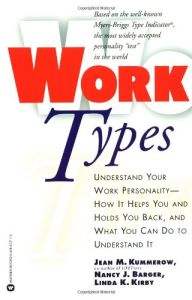Join getAbstract to access the summary!

Join getAbstract to access the summary!
Jean M. Kummerow, Nancy J. Barger and Linda K. Kirby
Worktypes
Understand Your Work Personality - How It Helps You and Holds You Back, and What You Can Do to Understand It
Warner Books, 1997
What's inside?
Wondering why you got passed over for that big promotion? Maybe it’s a simple matter of personality.
Recommendation
Worktypes can be a very useful tool for understanding how your personality affects your efficiency at work. Strategies for maximizing your strengths and minimizing your weaknesses are offered, as well as tips for dealing with personality types other than your own. Unfortunately, the book offers only a brief description of personality types. For readers to get the full value from this book, it is suggested that they read a book with more detailed descriptions of the 16 types. (The authors suggest the 1989 book Lifetypes, but any number of books focusing on the Myers-Briggs Type Indicator and psychological type will do.) Without a clear understanding of the 16 psychological types, it is difficult to apply most of the information in the book. However, with an appropriate companion book Worktypes can be instrumental in your quest to improve your effectiveness at work. getAbstract recommends this book to a wide range of readers, since the personality breakdowns can be of value to anyone from the most powerful leaders of corporations to their front-line employees.
Summary
About the Authors
Jean M. Kummerow is the co-author of Introduction to Type in Organizations and Lifetypes She is a consulting psychologist based in St. Paul, Minnesota Nancy J. Barger is a member of the International Faculty of the Association for Psychological Type MBTI Qualifying Training Program. Linda K. Kirby is the co-author of Introduction to Type Dynamics and Development She is the director of the Association for Psychological Type MBTI Qualifying Training Program.
















Comment on this summary